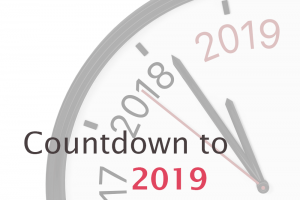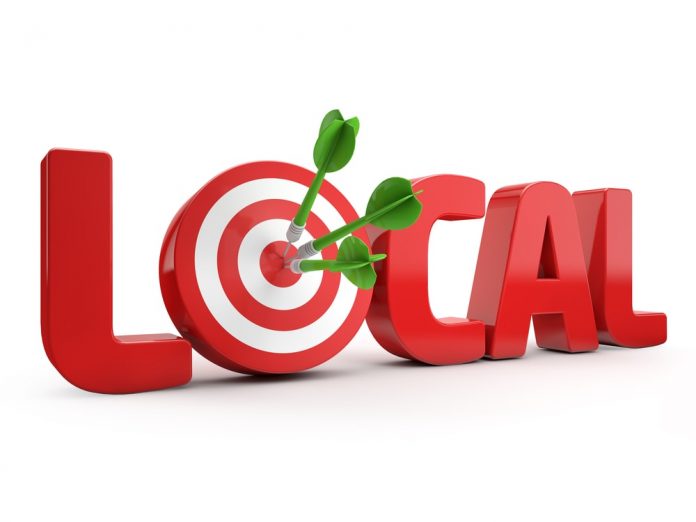In Partnership with Simply Business

3rd in a series of articles exploring how to make 2019 your business’s best year yet.
By Rieva Lesonsky
Many small businesses are dependent on local customers to survive—retailers, restaurant owners, accountants, contractors, remodelers, home services providers, among many others. For these business owners, marketing has become a little more complicated.
Here, and in the article to be posted next Monday, we’re going to explore the marketing musts your businesses must employ to be successful in 2019.
Websites are a must
It should go without saying that every business, no matter its size must have a website. But sadly, too many (some estimate 40%-50%) don’t. If you don’t have a business website, you must build one immediately. A website helps you build your brand and gives you a consistent online “home” for your business. (A social media platform is not a substitute for a website.) Businesses that actively engage online can expect to grow 40% faster than they would without an online presence, according to a report from BCG.
If you’re just starting out, don’t stress. Your first website needn’t be elaborate. Just make sure to include the basics—address, phone number, hours, prices and services. If you want people to come by your company, (obviously vital to restaurants and store owners) include a map and directions.
You’ll need to find a name for your website (check out NameStudio), which should, if possible, be the same or similar to the name of your business. Figure out if you want to DIY your website or hire a web designer to create a site for you? And then decide what your site needs to include, such as:
- Number of website pages
- Amount of website storage (images & videos need more storage space)
- Tools (online forms, blogs, customer reviews, maps, slideshows)
- Links to/integration with social media
- Video and/or audio players
- Shopping cart
- Tech support
- Ease of updating content
Check out this Checklist to Build a Website to learn more.
Make it mobile-friendly
All websites must be optimized for mobile viewing. Google’s algorithms primarily use the mobile version of a site’s content to rank pages from that site, which impacts your placement in the search engines.
More important, consumers demand mobile-ready websites. In fact, as Eric Reynolds, the SVP and CMO of Clorox says, all “marketing essentially is mobile today.” On Thanksgiving, for the first time ever, according to Adobe Analytics and reported on CNBC, consumers rang up $1 billion in sales via their smartphones. And over $2 billion in sales on Black Friday came from smartphones.
Overall this year, nearly 40% of e-commerce sales came from mobile devices, which should soar to almost 54% by 2021 according to Statista. Studies show consumers prefer to complete their entire shopping journey on mobile devices, however mobile conversions are still lower than desktop because the mobile user experience is subpar.
You don’t want to lose customers, so make sure:
- Your site loads quickly—you can test the speed of your mobile site here
- Photos are large enough for shoppers to see, but don’t slow load time
- Forms are short with drop-down options
- Your site is secure. If it’s not https://, Google’s Chrome browser shows a “NOT SECURE” warning next to the URL
Getting found online
While it’s vital for all businesses to appear on the major search engines (Google, Bing, etc.) for local businesses, it’s even more important to be discoverable on local search sites and directories. When consumers search on smartphones for businesses, products and services (which about 70% of consumers do), Google considers the phone’s location before displaying search results, giving businesses using local SEO an edge.
To implement a local SEO strategy:
- Claim your business listing on local search directories. Start by claiming your free listing on Google My Business. You may already have a listing, but if you haven’t “claimed” it, it’s likely not complete.
- Make sure the information about your business that’s essential to potential customers—business name, address, phone number and hours of operation—is correct.
- Use your Google My Business information as the basis for creating listings on other local search directories and maps. It’s important your name, address & phone (NAP) information is exactly the same on all local search directories. (According to Search Engine Bay the top 5 local directories are: Google, Bing, Yahoo, Yelp and Facebook.)
- Enhance your listings by adding details, including photos (before and after shots capture consumers’ attention), menus, current promotions or seasonal hours.
- Include your business address in the footer of your site’s home page, Contact Us page and wherever else it’s appropriate. Add location-specific keywords (your city and neighborhood) in your site’s meta tags, title tags, descriptions and content.
- Your data needs to be kept up-to-date. This can be tedious and time-consuming, so consider farming it out to an agency or your webhost.
Voice: the new frontier
Voice search is the newest component of local marketing. Consumers are quickly embracing their digital voice assistants (Siri, Cortana, Alexa, Google Home, etc.) The statistics are compelling:
- By 2020 there’ll be about 76.5 million smart speaker users in the U.S, according to eMarketer. Already more than 17 million Americans buy products using smart speakers.
- ComScore predicts by 2020 50% of all searches will be via voice.
- Capgemini reports 24% of consumers would rather use a voice assistant than visit a website.
Consumers search differently on voice, so you’ll need to change your search strategy. When using voice search, people speak naturally, in full sentences. This means targeting long-tail keywords is a must. To do this, think about what questions consumers would ask when searching for businesses like yours. Answer the Public has a great tool to help you with this. Check out, for instance, these questions for a lawn-care business.
While voice search is relatively new, consumers already have expectations:
- 52% want to learn about your deals, promotions and sales
- 48% want personalized tips and information that helps make their lives easier
- 42% want to learn about upcoming events and activities
- 39% use their devices to get more information about a business, such as hours of operation and location
These are just a few of the strategies you need to embrace to better market your services and products. Next week we’ll look at how you can get the most out of email marketing, social media and ratings and review sites.
Be sure to read our Countdown to 2019 posts on managing cash flow and managing employees’ time.
Local stock photo by ahmetemre/Shutterstock







